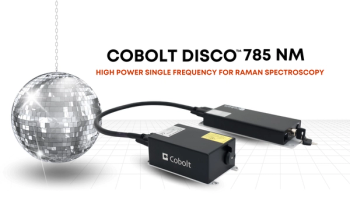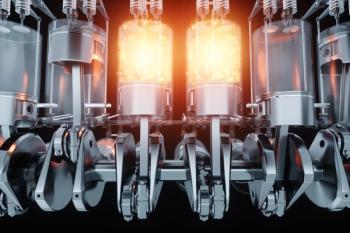
New High-Resolution Isotopic Analysis Method Holds Promise for Safer Lithium Batteries
Researchers at Université Paris-Saclay have successfully employed the novel laser-induced breakdown self-reversal isotopic spectrometry (LIBRIS) technique to achieve high-resolution isotopic analysis of lithium in solid-state electrolytes for lithium batteries. The breakthrough method offers valuable insights into lithium transport mechanisms at a microscale level, holding promise for the development of safer and more efficient Li-ion batteries in the future.
In the pursuit of safer and more efficient Li-ion batteries, researchers have been investigating solid-state electrolytes due to their potential for improved safety. However, lithium's lower diffusion coefficients in these materials have posed challenges for their practical implementation. To better understand lithium transport mechanisms in solid-state electrolytes, researchers have turned to isotopic tracing, a method commonly used in environmental sciences, medicine, and biology. In the battery field, this method has been developed since 2011 by Lu et al. Yet, a new complementary method has now emerged, offering the ability to determine the spatial distribution of lithium isotopes with high precision in solid electrolytes.
Known as laser-induced breakdown self-reversal isotopic spectrometry (LIBRIS), this novel technique was proposed by Touchet et al. in 2020. In a recent study led by Doriane Gallot-Duval at Université Paris-Saclay in Gif-sur-Yvette, France, researchers successfully applied LIBRIS to analyze a solid electrolyte composed of poly(ethylene oxide) (POE) containing 6Li enriched lithium bis(trifluoromethylsulphonyl)imide (LiTFSI). The researchers achieved a proof of concept of LIBRIS analysis for this material and then further improved the lateral resolution of LIBRIS measurements from 250 μm down to an impressive 7 μm. This research was published in Spectrochimica Acta Part B: Atomic Spectroscopy.
Micro LIBRIS is a cutting-edge analytical technique used for high-resolution isotopic analysis of materials. In LIBRIS, a laser is focused on a small area of the sample, causing localized ablation and breakdown of the material into a plasma. This plasma emits characteristic spectral lines, allowing researchers to measure the isotopic composition of the elements present in the sample. The unique feature of LIBRIS is its ability to achieve high lateral resolution, down to micrometer scales, enabling the precise spatial mapping of isotopic ratios within a sample. This technique has proven to be particularly valuable for studying lithium transport mechanisms in solid-state electrolytes of lithium batteries, offering insights into the diffusion of lithium isotopes and potentially leading to safer and more efficient battery designs.
The enhanced lateral resolution achieved through LIBRIS opens up new possibilities for studying lithium transport mechanisms in solid electrolytes composed of a dispersion of ceramic microparticles in a polymer matrix. Such material designs are being explored to enhance lithium diffusion compared to traditional polymer-based electrolytes, potentially leading to safer and more efficient Li-ion batteries.
During the study, researchers also addressed the sources of signal fluctuations encountered in LIBRIS analysis, allowing for greater accuracy in the obtained data. A calibration curve of the 6Li isotopic abundance in POE/LiTFSI samples was established with a relative uncertainty of 25%, demonstrating the reliability and potential of the LIBRIS technique for high-resolution isotopic analysis.
This breakthrough method presents a promising avenue for future research into characterizing lithium mobility in battery materials. By shedding light on lithium transport mechanisms at a microscale level, LIBRIS could contribute significantly to the development of safer and more efficient solid-state electrolytes for Li-ion batteries. As the demand for clean and sustainable energy solutions continues to grow, this research paves the way for advancements that could revolutionize the battery technology landscape.
While further investigations and refinements are necessary, the successful application of LIBRIS in this study showcases its potential as a valuable tool in the ongoing efforts to create safer and more reliable energy storage solutions. As battery technology continues to play a vital role in our daily lives, innovations such as LIBRIS offer hope for a greener and more sustainable future.
Reference
(1) Gallot-Duval, D.; Meyer, T.; Quéré, C.; Gutel, T.; De Vito, E.; Sirven, J.-B. High-resolution isotopic analysis of lithium by micro laser-induced breakdown self-reversal isotopic spectrometry (LIBRIS) for isotopic labelling of lithium in solid-state electrolyte of lithium batteries. Spectrochim. Acta, Part B 2023, 206, 106731. DOI:
Newsletter
Get essential updates on the latest spectroscopy technologies, regulatory standards, and best practices—subscribe today to Spectroscopy.





